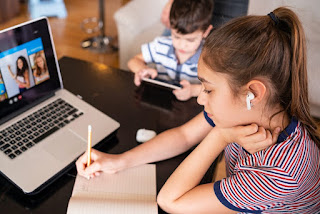Trends in Educational Technology - Equity and Inclusion
Trends in Educational Technology - Learning Ally
When thinking about technology in education, I think back to COVID Pandemic when schools were shutdown and teachers and students were doing remote learning. Schools had to adjust quickly to doing everything online, which was a learning process that was difficult. Teachers and students adjusted to being on an iPad or Chromebook each day and survived the chaotic times of managing lessons online through Zoom and Google Meets. As I examine students that I work with in education and those that I observe when I push in for support in classrooms, I see students who are struggling with certain skills that they did not quite learn. What is being done to assist these students? In most cases, these students remain in general education struggling until additional testing is completed. After testing and intervention is done, students end up in Special Education Resources for support and direct instruction. These are the students I assist in learning on a daily basis.
 |
| Image Source: www.usnews.com |
This year, students in our room began using Learning Ally in our classroom for independent reading while the Special Education teacher and I provide for other students in the classroom. Learning Ally is an educational tool that I believe falls under "Equity and Inclusion" and "Technology Coaching and Professional Learning" in ISTE's blog post for EdTech's Hottest Trends. Many students are still having a trouble trouble with recognizing basic sounds and even writing letters. Teachers each day are working harder than ever to accommodate and teach a variety of different levels of students in the classroom, but are stuck when it comes to helping those that struggle. Learning Ally provides an opportunity to be able to be exposed to a variety of books even when they are struggling through listening to books. Students then do not feel left out looking at simple books when their friends may be reading books they want to read. Learning Ally gives students equitable access to human read audio books and provides in a format which they are able to grasp.
Comments
Post a Comment